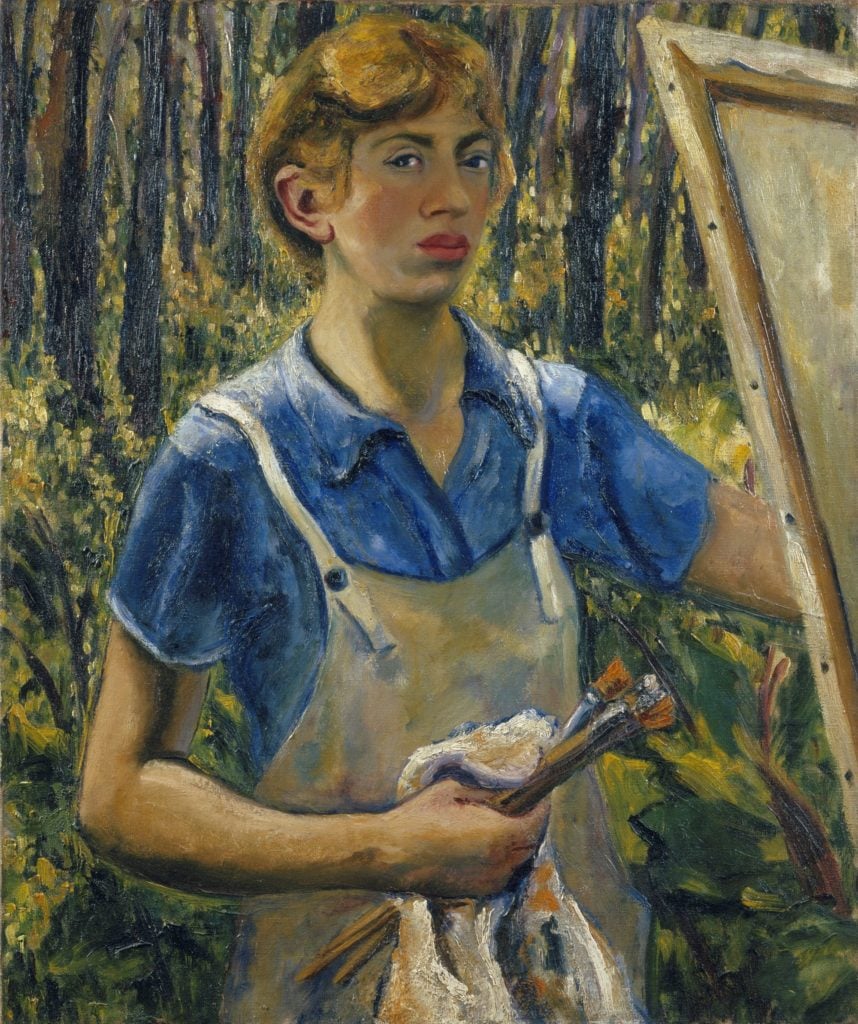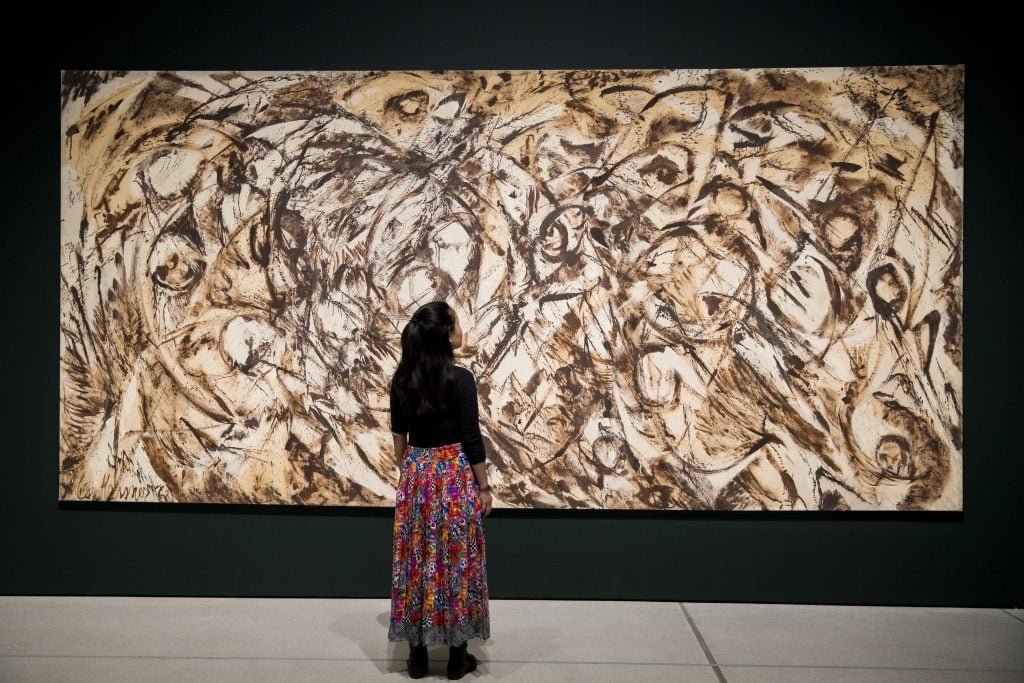Art World
Eureka! How Painting at Night Transformed Lee Krasner’s Colors
Bouts of insomnia and mourning led Krasner to a creative breakthrough.

In December 1956, an inebriated Jackson Pollock was speeding through East Hampton, on Long Island, when he lost control of his Oldsmobile, killing himself and Edith Metzger, a friend of his mistress, Ruth Kligman. (Also in the car, Kligman survived the crash.) He was 44.
Pollock’s estranged wife, fellow painter Lee Krasner, was on a trip to Europe when she received news of the accident. While their relationship had buckled under the weight of Pollock’s increasing struggles with alcoholism, Krasner was devastated. For years, she struggled with insomnia until one night, instead of trying in vain to fall asleep, she went to her easel and grabbed a paintbrush.
Her intense emotional state, combined with the absence of natural light, produced a series of paintings unlike anything she’d ever made before. Collectively referred top as her “Night Journeys,” the series, created between 1959 and 1963 at the Long Island barn studio she had previously shared with Pollock, constitute a sharp break from her earlier work.

Lee Krasner, Self-Portrait (c. 1928). The Jewish Museum, New York. © The Pollock-Krasner Foundation.
Courtesy the Jewish Museum, New York.
Where paintings like 1942’s Untitled are bright, colorful, and cubist in the style of her Art Students League teacher Hans Hoffman, the works that make up Night Journeys are somber and foreboding, more expressionist, and generally rendered in black, white, and a limited array of unsaturated earth tones.
Krasner’s palette was determined by her physical circumstances as much her emotional state. “I realized that if I was going to work at night I would have to knock out color altogether, because I couldn’t deal with color except in daylight,” she once said.
One entry in the series, Night Watch (1960), takes inspiration from 17th-century Dutch master Rembrandt van Rijn’s painting of the same name. In addition to her use of dark colors, Krasner identified with Rembrandt’s subject. Just as the latter’s militia group watched over the city of Amsterdam after the sun went down, so too did Krasner herself remain awake and vigilant.

Lee Krasner, The Eye is the First Circle (1960) on view at “Lee Krasner: Living Colour” at Barbican Art Gallery in London, 2019. Photo: Tristan Fewings/Getty Images for Barbican Art Gallery.
Another painting in the series, The Eye is the First Circle (1960) is named after an essay by American writer and transcendentalist Ralph Waldo Emerson, in which he wrote: “A new genesis were here. The eye is the first circle; the horizon which it forms is the second; and throughout nature this primary figure is repeated without end. It is the highest emblem in the cipher of the world.”
Her wide-ranging references notwithstanding, Krasner’s work was first and foremost autobiographical. “I am preoccupied with trying to know myself in order to communicate with others,” she once said. “Painting is not separate from life. It is one. My painting is so autobiographical, if anyone can take the trouble to read it.”
In retrospect, “Night Journeys” did not constitute a phase so much as it did a paradigm shift, with Krasner continuing to produce nighttime artworks well into the 1960s. One of these, Night Creatures (1965), which isn’t part of the series, sees her abstract, expressive brushstrokes morph into dozens of anguished faces—a society of screamers à la Edvard Munch.
The success of the series allowed Krasner to escape a shadow that had been enveloping her from the moment she decided to become a painter. Despite her obvious talent, critics seldom recognized her as an artist in her own right, comparing her to her male peers and, later, to Pollock. With “Night Journeys,” Krasner’s star rose—in the dark of night as in the light of day.
What inspired Mary Cassatt’s portraits of mothers? Why did Jackson Pollock paint on the floor? Eureka investigates the origins of artists’ most famous works and techniques, unpacking how great art ideas happen.





